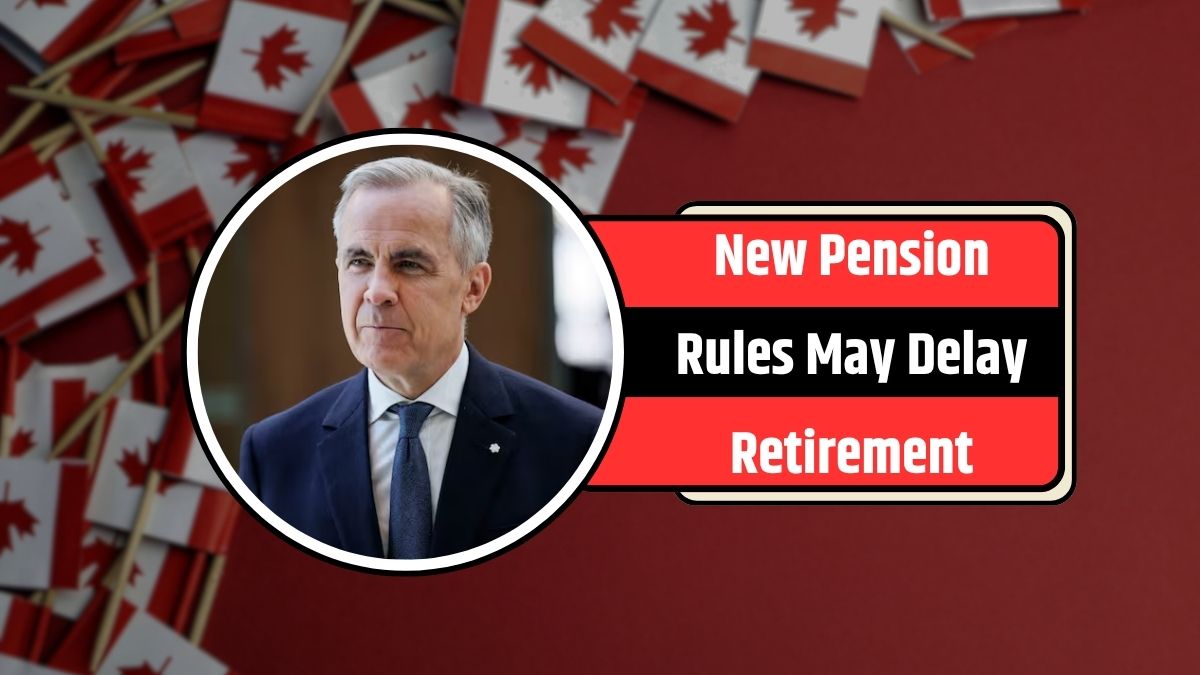As Canada navigates 2025, an urgent debate is unfolding over the future of retirement age and pension withdrawal rules. With Canadians living longer, costs of living rising, and public pension programs under pressure, discussions are intensifying about how—and when—people should be able to retire.
No official legislation has passed yet, but proposed reforms could soon reshape the retirement landscape for millions of Canadians. Whether you’re approaching retirement or just entering the workforce, these potential changes to CPP and OAS could affect your financial planning.
Why Is the Retirement Age Debate Gaining Momentum?
A combination of demographic shifts and economic strain is fueling the push for retirement policy reform in Canada. Here are the key driving forces:
Canada’s Aging Population
By 2030, more than 20% of Canadians will be over the age of 65, according to federal demographic data. This aging trend places significant stress on public pension systems like the Canada Pension Plan (CPP) and Old Age Security (OAS).
Canadians Are Living Longer
Thanks to medical advances and healthier lifestyles, life expectancy is rising, meaning people are spending more years drawing pensions after retirement. This longer period of benefit collection raises sustainability concerns for public funds.
Soaring Cost of Living
Inflation, housing prices, and rising healthcare costs are making it harder for seniors to live comfortably on fixed incomes. Many are now working past age 65, not by choice, but out of financial necessity.
Pension Program Viability
Concerns about the long-term funding of CPP and OAS are mounting. Without changes, experts warn these programs may become less generous or financially unstable in the coming decades.
Proposed Changes to Canada’s Retirement and Pension System
In response, government advisors and policy groups have put forward several proposals in 2025 to modernize Canada’s retirement policies. These ideas are now under national discussion:
- Increase the retirement age from 65 to 67 by 2030
- Allow early pension withdrawals at age 60 for part-time workers
- Raise CPP contributions for high-income earners
- Provide higher bonuses to encourage working beyond 65
- Expand tax credits for seniors still employed after retirement age
These changes form the core of the Pension Withdrawal Policy Updates 2025, a proposed package designed to balance fairness and financial sustainability.
Proposed Retirement Policy Updates – 2025 At a Glance
| Policy Proposal | Current Status | Proposed Change | Affected Group |
|---|---|---|---|
| Retirement Age | 65 | Increase to 67 by 2030 | Workers under 60 |
| Partial Pension Withdrawal | Allowed from 60 | Add flexible work incentives | Early retirees |
| CPP for High-Income Earners | Flat-rate contributions | Tiered increases | Top income brackets |
| Pension Deferral Bonuses | Optional | Increase rewards for deferral | Workers over 65 |
| Tax Credits for Working Seniors | Limited | Broader eligibility | Employed seniors post-65 |
Public Opinion: A Nation Divided on Retirement Reform
The reaction across Canada has been mixed, with support and opposition split along geographic and socioeconomic lines.
Urban vs. Rural Divide
Urban white-collar workers often back the idea of retiring later—especially with added financial benefits. Meanwhile, many blue-collar and rural workers argue that working longer is physically unrealistic and unfair, especially for those in labor-intensive roles.
Advocacy and Concerns from Senior Groups
Organizations like the Canadian Association of Retired Persons (CARP) have voiced caution. They insist that reforms must protect low-income seniors, people with chronic health issues, and those unable to work past 65.
Political Debate Heats Up in Parliament
These retirement proposals have sparked debate in Parliament, with some parties pushing for bold reforms while others warn that drastic changes could trigger a pension crisis or widen inequality among older Canadians.
The federal government has yet to formally introduce legislation, but parliamentary committees are now reviewing recommendations, and a formal bill may be introduced before the end of 2025.
What These Changes Could Mean for You
Whether you’re 25 or 65, retirement reform could reshape your financial future. Here’s how the changes may impact various age groups:
Canadians Aged 60–64
If the retirement age increases, this group may wait longer to receive full benefits, but might benefit from partial withdrawals and flexible work options under the new proposals.
Current Retirees
No major changes are expected for those already retired, though indexation policies or eligibility rules could evolve in the near future.
Workers Under 40
Younger Canadians will likely face higher contribution requirements and be expected to work longer before accessing full benefits.
How to Prepare for Canada’s Retirement Future
Regardless of whether the proposals pass in 2025, it’s smart to review your retirement plan. Here are key steps Canadians should consider:
- Track CRA and Service Canada announcements for updates
- Evaluate your private retirement savings strategy
- Plan for longevity—consider the possibility of living into your 90s
- Speak with a financial advisor about how policy shifts could impact your plans
FAQs
Q1. What is the current retirement age in Canada in 2025?
The standard retirement age remains 65, but early pension access is available at 60 with reduced monthly payments.
Q2. Are changes to CPP and OAS confirmed?
Not yet. While several proposals have been tabled, no final legislation has been passed as of mid-2025.
Q3. Will current retirees be affected?
Current retirees are not expected to lose benefits, but future indexing or eligibility adjustments may occur over time.
Q4. Can I still retire early?
Yes. Early retirement at age 60 is still possible in 2025, but with reduced payouts from public pension programs.
Q5. What should I do now to prepare?
Make sure to follow government updates, consider private savings or RRSPs, and speak with a financial advisor to plan for different retirement scenarios.








